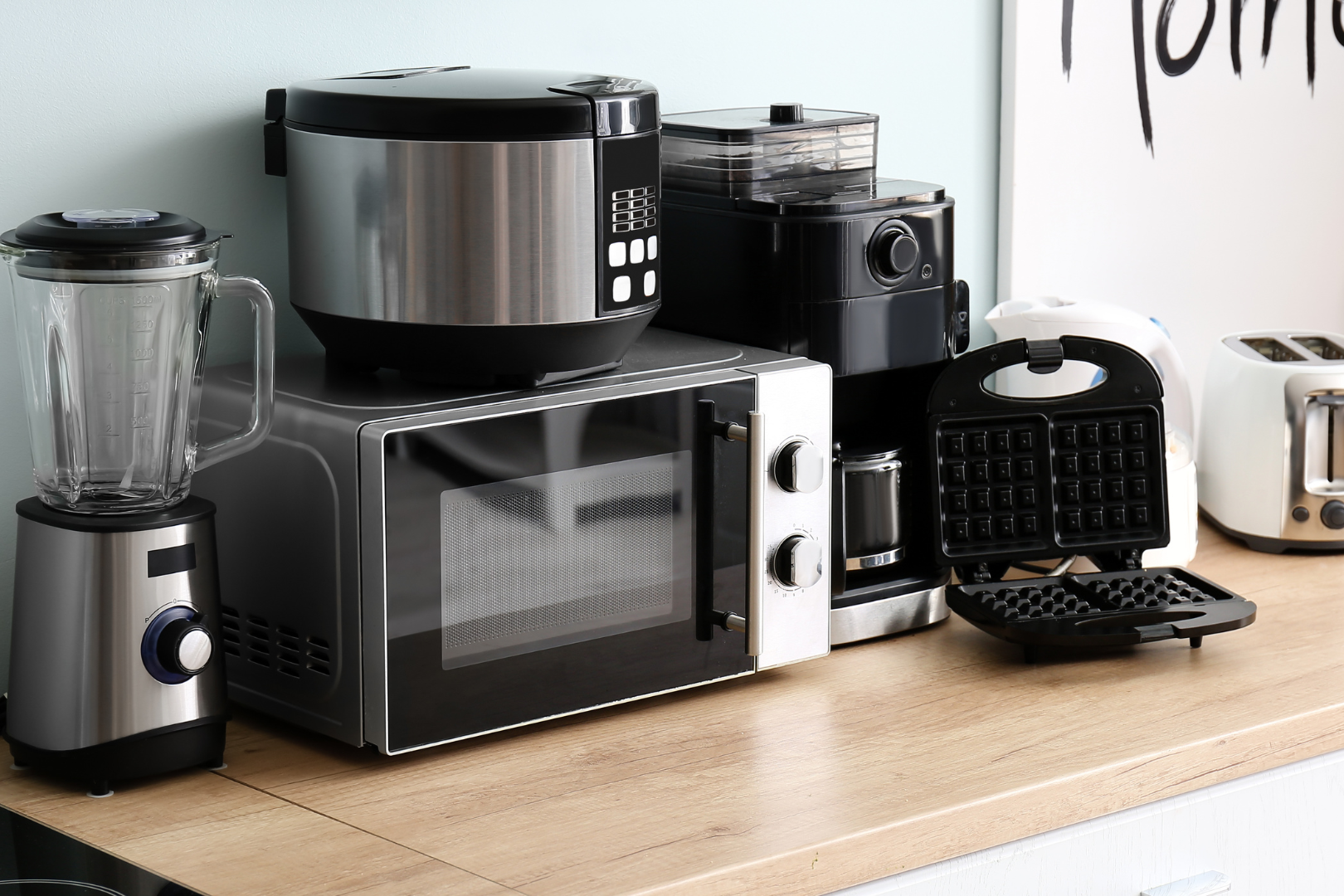Growth within the Consumer Electronics market is shown to be outpacing nearly all global economies — and keeping track of the trends, retailers, and brands driving that growth is key for any electronics business.
Dive into the latest OpenBrand Durable IQ™ market data for Consumer Electronics, including top brands and retailers, consumer preferences, and the key factors influencing consumer purchase decisions. For additional valuable market insights, download our free U.S. Consumer Electronics market infographic.
Source: All data in this article was pulled from the OpenBrand Durable IQ platform using the rolling 4Q ending Q3 2023, Consumer Electronics category. The OpenBrand Consumer Electronics category is an aggregate of several products: TV (62%), Video Game System (32%), Camera-Digital (7%). For the most recent insights or further dives into the data, please contact us.

Who are the top Consumer Electronics retailers by market share?
As of September 2023, the leading retailers for Consumer Electronics were Walmart and Best Buy.
Consumer Electronics Retailer Unit Share
- In unit share, Walmart led all other outlets with a unit share of 33%.
- Following behind Walmart, Best Buy was the next largest retailer in unit share (24%), and the third largest was Amazon (12%).
- Walmart saw the largest share change from the same time prior year, with a significant increase of 1.2 percentage points.
- Best Buy has the largest decrease in unit share at -0.9 points.
Consumer Electronics Retailer Dollar Share
For Consumer Electronics retailers by dollar share, Best Buy led at 30% market share.
- Walmart and Amazon follow closely behind Best Buy, with 25% and 11%, respectively. As seen in unit share purchases:
- Walmart increased in dollar share from the same time prior year, up 0.8 points.
- Best Buy decreased in dollar share -1.1 points.
Draw-Close Rates
Which outlets drew in the most consumers? Market share leaders Walmart, Best Buy, and Amazon also led all other outlets in draw rate, with 47%, 37%, and 21%, respectively. Draw rate denotes the number of consumers a given outlet brought into their stores or ecommerce site.
Across all retailers, Walmart also held the highest closing rate at 69% — up 1.5 points from the same time last year. Close rate represents the percent of consumers that purchased at a given retailer.
Who leads Consumer Electronics market share by brand?
Looking at units sold, the most popular Consumer Electronics brands as of September 2023 were Sony (21% share) and Samsung (18% share). Many of the popular brands saw a decrease in unit share year-over-year. Sony was the only leading brand to enjoy an increase, gaining 1.7 percentage points. This increase comes after a decline of 1.0 point between September 2021 and September 2022.

Similarly, in dollar share purchases, the leading Consumer Electronics brands as of September 2023 were Samsung (26%) and Sony (25%). Dollar share saw similar growth trends as unit share, with Sony remaining the only leading brand to see a share increase compared to the prior year, growing 1.9 points.
Brand Consideration Rates
Sony and Samsung also lead brand consideration rate with 33% and 30%, respectively. Notably, after a decline of 2.0 points in 2022, Sony’s close rate of 63% rebounds with a significant increase of 3.1 points.
[Download the infographic to see the share percentage breakdown by all top CE brands.]
What is the average price paid in the Consumer Electronics market?
As of September 2023, the industry average price paid for Consumer Electronics was $463. The average price paid saw a decline from the same time a year ago, down from $482. However, the average amount spent at individual outlets varies. Here are a few outlet pricing insights:
- Costco and Best Buy have higher average prices than other leading outlets, at $728 and $573 respectively.
- While Costco’s unit and dollar shares rank toward the bottom compared to other leading outlets, Consumer Electronics purchases at Costco have a notably higher average price paid than other outlets.
- In general, outlet average prices slightly declined from this time last year.
- Costco has the largest change in average price with a decline of $37.
- Amazon has the smallest change with a decline of only $3.
How are online and in-store sales trending for the U.S. Consumer Electronics market?
In-store purchases remain the most common sales channel for Consumer Electronics shoppers, with 63% of purchases made at a retail location. Online purchases account for 33% of total purchases. Notably:
- Consumer Electronics purchases made in-store have increased for the past two years — with September 2023 data showing an increase of 1.0 point compared to the same time the previous year.
- Historically, consumers pay a slightly higher average price when purchasing Consumer Electronics in-store. This trend continued as of September 2023, when consumers saw an average price of $473 for in-store purchases and $461 for online.
- Of the 63% of Consumer Electronics purchases made in-store, 47% of those consumers still shopped online during their purchase process.
Other key U.S. Consumer Electronics market insights
Durable IQ goes beyond retailer and brand market share, providing a total market view for the Consumer Electronics industry. Here are a few other key insights as of September 2023.
Consumer Electronics Purchase Drivers
- As shown in previous years, the most mentioned reason for purchasing a new Consumer Electronic product was “replacement of broken/service needed.”
- The top three reasons mentioned for purchasing a new Consumer Electronics product were:
- Replacement of broken (32%)
- Just wanted a new one (19%)
- Wanted an additional one (13%)
- When looking at why consumers select a specific retailer for Consumer Electronics purchases, the most mentioned reasons for purchasing were:
- Competitive price (58%)
- Good product selection (30%)
- Convenient location (23%)
- Previous store experience (19%)
Outlets & Brands Shopped
Across all Consumer Electronics purchases, 57% of purchasers shop only one store, and 56% only shop for one brand.
Consumer Electronics Shopper Demographics
Who is the typical Consumer Electronics shopper? As of September 2023, consumer demographic insights for the Consumer Electronics market include:

- 59% of purchasers are homeowners
- 37% of purchasers are renters
- 48% of purchasers are married
- 48% of purchasers are made with males only involved in the purchase decision
- 31% of purchases are made with females only involved in the purchase decision
- 61% of Consumer Electronics purchasers are Millennials (35%) and Gen X (26%).
- Notably, Millennials and Gen X purchase shares are down or flat from last year.
- Meanwhile purchases by Gen Z have trended up in the past 5 years and continue that trend with an increase of 1.6 points since September 2022 – with Gen Z now making up 19% of CE purchases.
Get more Consumer Electronics trends & market share data
The Consumer Electronics market insights don’t stop here. For more retail sales data, market share, and other insights, download the Durable IQ-exclusive infographic below. To see insights for other industries or find out how we can help power growth for your business, contact us today.
Related blogs
Unlock the Power of Real-Time Data & AI in Retail Success: White Paper
Have your data — and use it too. Accessing data in retail is one thing. Knowing what to do with it is another. Market data is not meant to…
Related blogs
Consumer Price Index: Durable and Personal Goods | March 2025
This April 2025 edition of the OpenBrand CPI offers insights into March price movements and trends…
What the Kitchen Market Needs to Know About Appliance Tariffs, Pricing & More
As we move into Q2 2025, the kitchen appliance industry is facing a period of noteworthy…
3 Ways OpenBrand is Revolutionizing Retail Intelligence
In today’s hyper-competitive retail environment, actionable data is the lifeblood of strategic…
Consumer Price Index: Durable and Personal Goods | February 2025
This March 2025 edition of the OpenBrand CPI offers insights into February price movements and…





